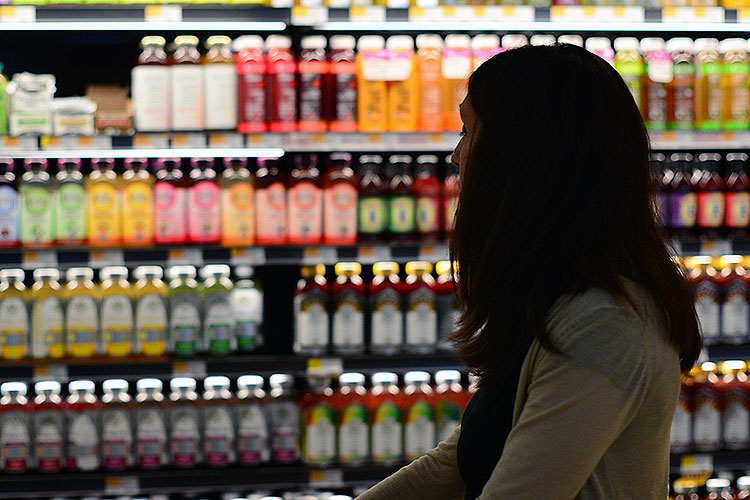Student Use of State Food Aid Widespread, and Increasing, Says New Berkeley Report

One in 10 California community college and University of California students receives food aid through the state’s CalFresh program, with the numbers markedly higher in expensive regions such as San Francisco and in lower income areas, says a new UC Berkeley report.
Nearly one-third of graduate students at the University of California, San Francisco (UCSF), received CalFresh benefits during the 2019-2020 academic year, according to researchers at the UC Berkeley California Policy Lab. At UC Merced, 21.5% of undergraduates received food aid, along with 21% at UC Santa Barbara.
At UC Berkeley, which has pioneered efforts to enroll students in CalFresh, 10.5% of students received state food aid that year, slightly below the statewide average at academic institutions analyzed by the Policy Lab.
“CalFresh benefits can be a big help to students struggling to cover basic living expenses while in school, but only if students are able to access benefits,” said report co-author Jesse Rothstein, a professor of economics and public policy at Berkeley and faculty director of the California Policy Lab’s Berkeley office. “Until now, we haven’t known how many students were receiving benefits, nor how many were eligible but not participating.”
“Many low-income and California community college students could benefit from more supports like CalFresh while they’re in school,” added Valerie Lundy-Wagner, vice chancellor of digital innovation and infrastructure in the office of California Community Colleges Chancellor Eloy Ortiz Oakley.
The report offers a striking picture of food insecurity among college and university students in every region of California, with higher percentages of students of color and older students reporting that they use the benefits.
The number of UC students enrolled in CalFresh has risen sharply since the 2016-2017 academic year, soon after the UC Office of the President (UCOP) increased funding for the university system’s Basic Needs Initiative; one element of the initiative sought to increase use of the benefits by low-income students. That year, just under 4% of UC undergraduates received food aid; by 2019-2020, the number had increased to 11.8%, the study found.
But the report found that the numbers vary widely across different locations.
At UCSF, which enrolls only graduate students, 32.9% of them were enrolled in CalFresh in 2019-2020.
Among California community college students, 17% in the Central Valley received food aid, along with more than 12% in both the Inland Empire and Northern California regions.
CalFresh, also known as SNAP or food stamps, awards eligible students up to $250 per month for nutritious, healthy foods. At UC Berkeley, the Basic Needs Center assists students in applying for the support.
The report results from an ambitious partnership — the Student Supports Project — linking the California Policy Lab with the state’s higher education and safety net systems to establish a database focused on enrollment, educational financial aid and CalFresh participation.
“California’s high cost of living impacts everyone, including students who often have very limited resources,” said Shawn Brick, executive director for student financial support at UCOP. The new report “is the first step in understanding how many students are benefiting from CalFresh and we’re excited about the next phase, which will show … what more we can do to help them access these critical resources.”
“Our students shouldn’t have to worry about whether or not they can afford their next meal,” said Genie Kim, UCOP’s director of student mental health and well-being. “That’s why we’re excited about this work and about improving access for students across the state.”
